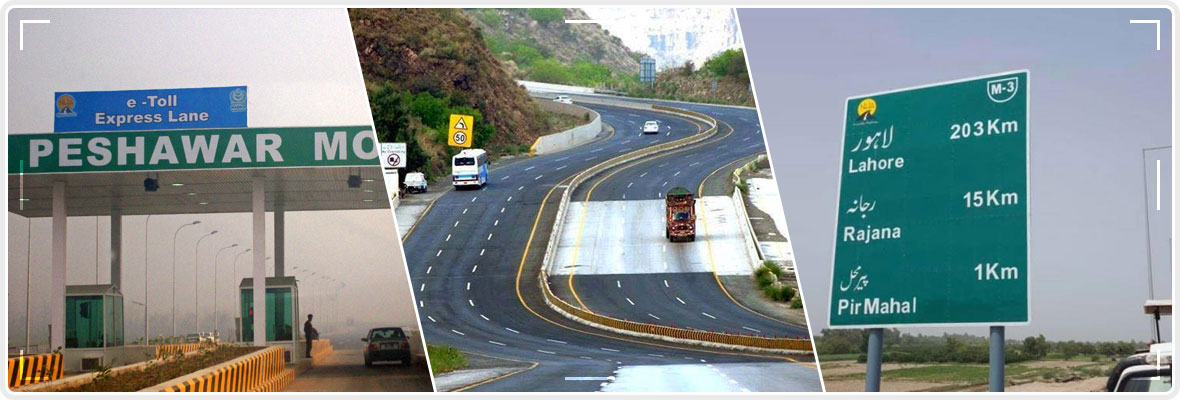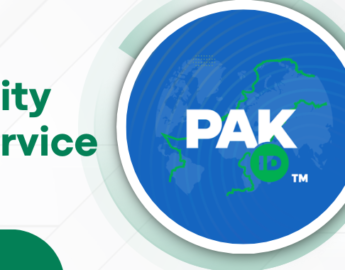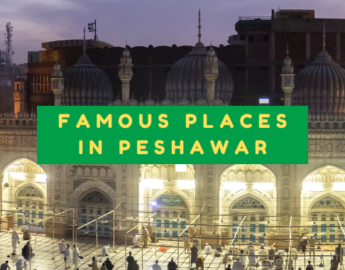Everything You Need To Know About Pakistan’s National Highways & Motorways
Table of Contents
In certain aspects, such as traffic conditions, you can see the difference between Motorways and Highways of Pakistan.
National Highways and Motorways are the names used for different types of roads that provide faster and more efficient car transportation to major cities in the country. Highways are used more in the UK than in other parts of the world.
Here in Pakistan, all Motorways are numbered M1, M2, M3, etc., and they connect to the main destination. The numbering system is different from that of national highways, but there are many similarities between the Motorways and national highways.
On national Highways in Pakistan, each number is separated by five digits, named NH-5, NH-10, and so on. Meanwhile, Motorway denotes M1, M2, and so on.
The National Highway Administration (NHA) was established in 1991 under the Act of Congress to plan, develop, operate, repair, and maintain the national highways and Motorways authorized by the federal or provincial governments or other relevant agencies.
NHA is the custodian of 39 national highways /motorways/expressways/ strategic roads with a total length of 12,131 kilometers.
It accounts for 4.6% of the country’s total road network or 263,775 kilometers, but it carries 80% of commercial traffic, while N-5 (Pakistan’s blood vessel) carries 65% of the country’s freight.
As the custodian of road assets in Pakistan’s road network, these roads are the backbone of Pakistan’s economy. Also, it is committed to providing a safe, modern, and efficient transportation system.
As the cornerstone of the road network, national highways are the backbone of Pakistan’s transportation system.
They play an important role in the development of micro and macroeconomy and the promotion of national integration by increasing social and economic dependence. Between provinces.
List of Famous Pakistan National Highways And Motorways
Pakistan’s national road network is different from Pakistan’s roads. The main difference is that, unlike highways, national highways are not regulated and access to them is not restricted.
Like highways, the National Highway Administration of Pakistan owns, maintains, and operates all national highways.
Pakistan’s national highways include popular highways such as the Grand Trunk Highway, the Indus Highway, the Karakoram Highway and the Makran Coastal Highway.
Pakistan has one of the most advanced road networks in the world, thanks to all newly built highways, making intercity travel in Pakistan more comfortable, enjoyable and safe than ever. These roads not only connect the city but also allow easy access to tourist attractions across the country. All these road connections are part of “Pakistan’s National Trade Corridor Project” and “China-Pakistan Belt Road Initiative,” which connects all major trade routes in the country, from the Khunjerab Corridor, which borders China, to Gwadar in Balochistan province.
In this blog, we will learn more about Pakistan’s expanding road network and how it effectively connects the entire country.
Rood Map of Pakistan
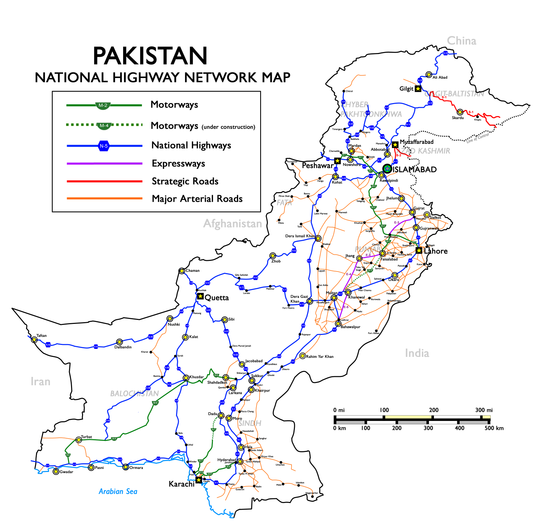
Road Map of Pakistan
National Highways of Pakistan
Source: Wikipedia
| Sign | Course | Length (km) | Lanes | Completion Year | Status | Remarks |
| Karachi – Torkham (N-5 National Highway) |
1819 | 4-6 | 1952 | Operational | Longest national highway in Pakistan. Continues as Kabul–Torkham Road in Afghanistan. |
|
| Karachi – Gwadar (N-10 National Highway) |
653 | 2 | 2003 | Operational | Known more popularly as the Makran Coastal Highway. | |
| Mansehra – Chilas (N-15 National Highway) |
240 | 2 | – | Operational | ||
| Karachi – Chaman (N-25 National Highway) |
813 | 2 | – | Operational | Continues as Kandahar–Spin Boldak Road in Afghanistan. | |
| Basima – Khuzdar (N-30 National Highway) |
110 | 2 | – | Operational | ||
| Hasan Abdal – Khunjerab Pass (N-35 National Highway) |
806 | 2 | 1979 | Operational | Known more popularly as the Karakoram Highway Continues as China National Highway 314 in China. |
|
| Quetta – Taftan (N-40 National Highway) |
610 | 2 | – | Operational | Continues as Road 84 in Iran. | |
| Nowshera – Chitral (N-45 National Highway) |
309 | 2 | – | Operational | ||
| Kuchlak – Dera Ismail Khan (N-50 National Highway) |
531 | 2 | – | Operational | ||
| Kotri – Peshawar (N-55 National Highway) |
1264 | 2-4 | – | Operational | Known more popularly as the Indus Highway Runs along the length of the Indus River, providing relief to the N-5. |
|
| Lahore – Sargodha (N-60 National Highway) |
185 | 2-4 | – | Operational | ||
| Sibi – Sukkur (N-65 National Highway) |
385 | 2 | – | Operational | ||
| Qila Saifullah – Multan (N-70 National Highway) |
447 | 2-4 | – | Operational | ||
| Islamabad – Kohala (N-75 National Highway) |
138 | 4 | – | Operational | ||
| Islamabad – Kohat (N-80 National Highway) |
146 | 2 | – | Operational | ||
| Hushab – Surab (N-85 National Highway) |
487 | 2 | – | Operational | ||
| Khwazakhela – Besham (N-90 National Highway) |
64 | 2 | – | Operational | ||
| Chakdara – Kalam (N-95 National Highway) |
135 | 2 | – | Operational | ||
| Larkana – Lakhi (N-105 National Highway) |
61 | 2 | – | Operational | ||
| Gharo – Keti Bunder (N-110 National Highway) |
90 | 2 | – | Operational | ||
| Hyderabad – Khokhrapar (N-120 National Highway) |
220 | 2 | – | Operational | ||
| Taxila – Haripur (N-125 National Highway) |
44 | 2 | – | Operational | ||
| Larkana – Mohenjo Daro (N-155 National Highway) |
28 | 2 | – | Operational | ||
| Larkana – Nasirabad (N-255 National Highway) |
34 | 2 | – | Operational | ||
| Sakrand – Nawabshah (N-305 National Highway) |
35 | 2 | – | Operational | ||
| Larkana – Shahdadkot (N-455 National Highway) |
50 | 2 | – | Operational | ||
| Ratodero – Naudero (N-655 National Highway) |
18 | 2 | – | Operational |
Motorways Pakistan
The National Highway Administration (NHA) manages the entire network of Pakistan’s elevated inter-city highways, and its inbound and outbound stations are directly controlled by the National Highway Administration (NHA) and are based on the following highways.
Source: Wikipedia
| Name | Route | Length (km) | Lanes | Completion Year | Status | Remarks |
| M-1 | Peshawar–Islamabad | 155 | 6 | 2007 | Operational | Hazara Expressway Interchange was completed in 2018. |
| M-2 | Islamabad–Lahore | 334 | 6 | 1997 | Operational | Repaved in 2016 |
| M-3 | Lahore–Abdul Hakeem | 230 | 6 | 2019 | Operational | Construction began in December 2015. |
| M-4 | Pindi Bhattian–Multan | 309 | 4-6 | 2019 | Operational | Construction began in 2009. |
| M-5 | Multan–Sukkur | 392 | 6 | 2019 | Operational | Construction began in May 2016. |
| M-6 | Sukkur–Hyderabad | 296 | 6 | 2023 | Planned | M-6 Motorway pending from last 5 years to Due to NHA negligence.No groundwork in progress. |
| M-8 | Ratodero–Gwadar | 892 | 2 | 2022 | Partially Operational Under Construction |
Operational between Hoshab-Gwadar and Khuzdar-Ratodero. |
| M-9 | Hyderabad–Karachi | 136 | 6 | 2018 | Operational | Construction began in September 2015. |
| M-10 | Karachi Northern Bypass | 57 | 2 | 2007 | Operational | Proposed for expansion into 4 lane. |
| M-11 | Lahore–Sialkot | 103 | 4 | 2020 | Operational | Construction began in April 2017. Expanded to Rawalpindi via Kharian-Jhelum till 2021. |
| M-14 | Hakla–D.I Khan | 280 | 4 | 2020 | Under Construction | Construction began in May 2016. |
| M-15 | Hasan Abdal–Thakot | 180 | 6-4-2 | 2020 | Operational | Construction began in 2016 |
| M-16 | Swat Motorway | 160 | 4 | 2021 | Partially Operational Under Construction |
Operational from Nowshera to Chakdara |
The above table shows a complete list of all highway routes in Pakistan as of November 2019.
First, let’s take a look at the fully operational roads in Pakistan.
Motorway M-1 Peshawar-Islamabad
The Peshawar-Islamabad highway is 155 kilometers long and has 14 Interchanges. The M1 Peshawar-Islamabad Highway (Peshawar-Islamabad Highway) starts from the Peshawar Ring Road in the northeast of Peshawar.
It is 155 kilometers long and has 14 connections, including the Peshawar Ring Road and the Peshawar North Ring Road. Charsadda, Rashakai, Sawabi, Chaka, Ghazi, Hazara Expressway (E-35), Burhan (Hassanabdal/Kamra), Burma, Bhatar, AWT/Sanjiani/Paswal and Islamabad’s airport connection road. The M-1 highway between Peshawar and Islamabad crosses Kabul, Haro, and the Indus with the help of three main bridges.
In addition to these Interchanges and bridges, the highway also contains 27 bridges, 137 tunnels, 18 bridges, and 571 canals.
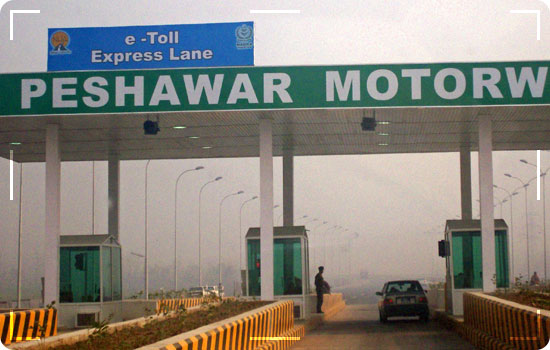
Motorway-M-1-Peshawar-Islamabad
M2 Lahore-Islamabad Highway
The M-2 Islamabad-Lahore highway was the first highway built in South Asia in 1997. It passes through the wooded areas of Punjab and stretches for 375 kilometres.
This is a 6-lane highway with 22 interchanges at various points, such as the M2 Interchange. M1, Islamabad, Thalian Exchange, Chakri Exchange, Neelah Dullah M2 Exchange, Balkasar Exchange, Kallar Kahar Exchange, Lilla Exchange, Bhera Exchange, Saalam Exchange, Kot Momin Exchange, Makhdoom Exchange, Pindi Bhattian Exchanges, M-4 Pindi Bhattian-Multan Exchange, Sukheki, 4 Pindi Bhattian-Multan interworking, Khanqah Dogran interworking, Hiran Minar interworking, Sheikhupura interworking, Kala Shah Kaku interworking, Kot Abdul Malik interworking, Faizpur interworking, M-3 Lahore -Abdul Hakeem Highway, Babu Sabu Interchange and M2 Zero Lahore.
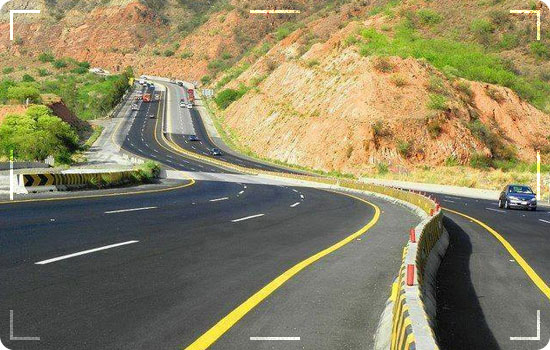
M2 Lahore Islamabad
Gas stations and service areas are located at five points on the Lahore-Islamabad M-2 highway on both sides of the road. These stations include the Sukheki service area, Sial service area, Bhera service area, Kalar Kahar service area, and Chakri service area.
The average distance between the service area and the refueling area is 60 to 80 kilometers. Some of Pakistan’s most famous restaurants have shopped at these stations on the M2 highway in Lahore, Islamabad.
M-3 Lahore-Abdul Hakim Motorway
The M3 highway opened in March 2019 and spanned 230 kilometers between the city of Abdul Hakim and Lahore. The highway starts at the M2 highway junction in Lahore and connects to the Pindi Bhattian-Multan highway junction with the M4 highway. In slavery. Wise man. It is also a six-lane highway with three rest areas and four interchanges along the way, including Shah Shams Tabriz Interchange, Vehari Road Interchange, Bahawalpur road Interchange and Sher Shah Interchange.
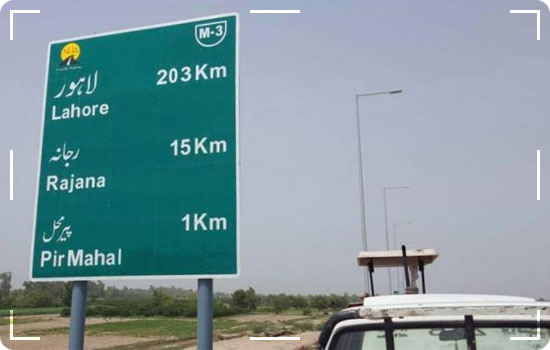
M3 Lahore Abdul Hakim
M-4 Pindi Bhattian-Multan Motorway
The M-4 Pindi Bhattian-Multan Expressway is 309 kilometers long and relies on 4 lanes on both sides of the road for traffic. It is a road connection between different cities in Punjab, such as Rawalpindi, Faisalabad, Toba Tek Singh, Shorkot, Khanewal, Abdul Hakim, and Multan.
Like other popular highways in Pakistan, there are more than a dozen Interchanges along the M-4 highway, connecting some of the most important road networks, including M-2, M-3, and M-5.
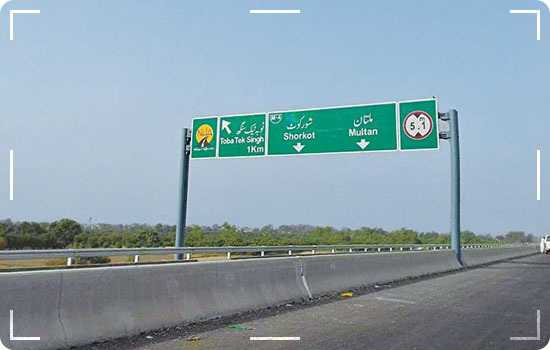
M-4 Pindi Bhattian-Multan Motorway
M-5 Multan Sukkur Motorway
The M-5 Multan-Sukkur road is 392 kilometers long, which is only part of the proposed road between Karachi and Peshawar, with a total length of 1,100 kilometers. The M-5 highway is one of the main projects of the China-Pakistan Economic Corridor because it greatly reduces the transportation time from the Karakoram highway to Karachi and Gwadar.
This is a 6-lane highway with 11 interchanges connecting different cities in Punjab, including Multan, Jalalpur Peerwala, Ahmed Pur East, Rahim Yar Khan, Sadiqabad, Pano Aqil, Ubaro and Sukkur.
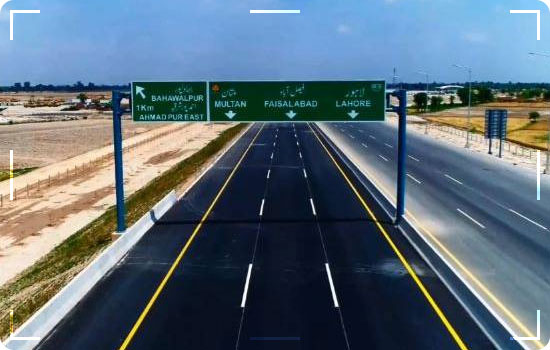
M-5-Multan Sukkur-Motorway
M-9 Karachi Hyderabad Motorway
The M9 Hyderabad-Karachi highway is 136 kilometers long and has a 6-lane motorway. It is one of the most important Pakistani Motorways connecting Karachi and Hyderabad, two major cities in Sindh.
It is built on the existing highway between Karachi and Hyderabad. The improvement of the expressway led to the creation of a 136-kilometer-long expressway consisting of 6 lanes with controllable entrances and exits at 8 Interchanges along the road. Some major housing communities are also located on the outskirts of Karachi along the M-9 highway, including the town of Bahria, Karachi, and DHA.
With a very modern infrastructure, one of the longest overpasses in South Asia has recently opened to traffic on Highway 9. The overpass establishes a connection from Karachi (Bahria Town), Sukkur to the direct road. This is Pakistan’s first exchange, funded by a private real estate developer.

M-9-Karachi-Hyderabad-Motorway
In order to facilitate travel, the part of the highway that crosses the Interchange is a 400-meter-wide two-way road with 18 lanes. This section is also equipped with 8-foot-high fences and 3-foot-high handrails to make the transfer safer. In addition, the architecture of the newly developed Interchange was inspired by Sheikh Zayed Road in Dubai.
Karachi Northern Bypass M-10
The Karachi North Ring Road is directly connected to the M-9 Karachi-Hyderabad Highway and Karachi Port. This route offers operators the fastest option to move between two destinations. Recently, the National Highway Administration (NHA) granted the status of this bypass highway, which is now officially recognized as the M-10 Karachi highway.
The M-10 motorway extends from Muhammad Ali Jinnah Road to KPT Bridge and has three main Interchanges, including junction M9, Trumpet interchange, and junction N-25.
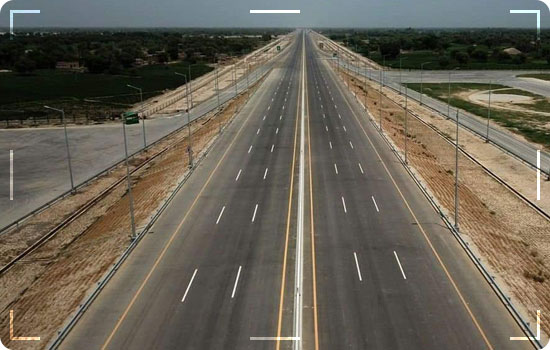
Karachi-Northern-Bypass-M-10
Havelian-Mansehra section of the Hazara Highway
The Hazara Highway is an important part of the China-Pakistan Economic Corridor (CPEC). This project is a high-level, high-level, late-stage development project of the Karakoram Expressway. The expressway is a major part of the China-Pakistan Economic Corridor and an important part of the north-south trunk road network.
The construction of this project will greatly promote the development of the local economy and the development of national urbanization.
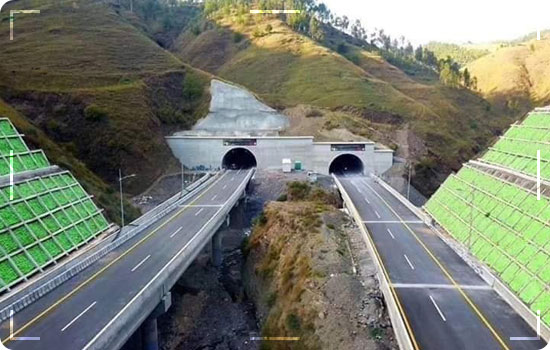
Havelian-Mansehra-section-of-the-Hazara-Highway
The highway consists of two parts. The first part, from Havelian to North Abbottabad, is 27,425 kilometres long, while the second part starts from North Abbottabad and ends at Manshera, 11880 kilometres long. On this highway, there are 3 junctions, 47 bridges, 12 bridges, 143 tunnels, and 4 toll stations.
Final Words:
Pakistan’s road network has a total length of 3,714 kilometers, including all the above-mentioned intercity roads, of which 1,870 kilometers are in operation. However, planning and development of the rest of the highway are progressing rapidly. Given the current rate of progress, it can be said that the completion of all these roads in Pakistan will only take a few years.
As mentioned in the table above, the names of roads under construction in Pakistan include M-8 Ratodero-Gwadar, M-11 Kharian-Lahore, and M-14 Hakla-D.I, some of which are also partially operating. Khan, Hazara Hassan Abdal Thakot Road.
This concludes with an overview of all major roads and inter-city highways in Pakistan. What other measures do you think should be taken to improve the country’s intercity travel experience?
If you are a travel fan, don’t miss reading our blog to learn about some of the most amazing and underrated tourist destinations in Pakistan. If you are planning to travel to Swat, Gilgit-Baltistan, check out our travel guide.

